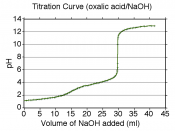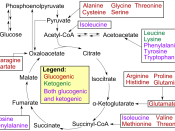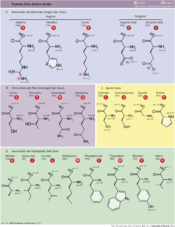Abstract
Experiment 11 used a titration curve to determine the identity of an unknown amino acid. The initial
pH of the solution was 1.96, and the pKa's found experimentally were 2.0, 4.0, and 9.85. The accepted
pKa values were found to be 2.10, 4.07, and 9.47. The molecular weight was calculated to be 176.3 while
the accepted value was found to be 183.5. The identity of the unknown amino acid was established to be
glutamic acid, hydrochloride.
Introduction
Amino acids are simple monomers which are strung together to form polymers (also called proteins).
These monomers are characterized by the general structure shown in figure 1.
Fig. 1
Although the general structure of all amino acids follows figure 1, the presence of a zwitterion is made
possible due to the basic properties of the NH2 group and the acidic properties of the COOH group. The amine group (NH2) is Lewis base because it has a lone electron pair which makes it susceptible to a coordinate covalent bond with a hydrogen ion.
Also, the carboxylic group is a Lewis acidic because it is able to donate a hydrogen ion (Kotz et al., 1996). Other forms of amino acids also exist. Amino acids may exists as acidic or basic salts. For example, if the glycine reacted with HCl, the resulting amino acid would be glycine hydrochloride (see fig. 2). Glycine hydrochloride is an example of an acidic salt form of the amino acid. Likewise, if NaOH were added, the resulting amino acid would be sodium glycinate (see fig. 3), an example of a basic salt form.
Fig. 2
Fig. 3
Due to the nature of amino acids, a titration curve can be employed to identify an unknown amino acid.
A titration curve is the plot of the pH versus the volume of...


